The first time I bit into a Bomboloni, I was standing in a tiny pasticceria in Florence, early morning sunlight streaming through the windows, the warm, sugar-dusted pastry still hot from the fryer. That first taste of these heavenly Italian Donuts was a revelation—impossibly light and pillowy with a rich custard filling that oozed out with each bite. It was a moment of pure culinary joy that I knew I needed to recreate in my own kitchen.
These Bomboloni (Italian Donuts) are not just any donuts—they’re a beloved Italian treat that holds a special place in Italian food culture. Unlike American-style donuts, Bomboloni are made with a yeasted dough that’s closer to brioche, giving them an airy, tender texture that practically melts in your mouth. Traditionally filled with custard, jam, or Nutella, these plump little pastries are a staple at Italian breakfast tables and afternoon coffee breaks.
After returning home from Italy, I spent months perfecting my Bomboloni recipe, testing different dough formulations and filling combinations. The recipe I’m sharing today captures the authentic taste and texture I remember from that small Florentine bakery. My Italian-American neighbor, Mrs. Ricci, gave these her seal of approval, declaring them “just like my nonna used to make”—perhaps the highest compliment a recipe can receive!
While making Bomboloni (Italian Donuts) does require a bit of time and patience, the result is well worth the effort. There’s something magical about watching the dough puff up in the hot oil, transforming into golden pillows of deliciousness. And that moment when you bite into one, with the contrast of the crisp, sugar-coated exterior giving way to the soft interior and creamy filling? Pure bliss.
Let me guide you through creating these little pieces of Italian pastry heaven in your own kitchen.
Table of Contents
Why You’ll Love These Bomboloni (Italian Donuts)
- These Bomboloni (Italian Donuts) have an incredibly soft, pillowy texture that’s different from typical American donuts
- The brioche-like dough of these Bomboloni gives them a rich, buttery flavor that’s irresistible
- Making Bomboloni (Italian Donuts) is a wonderful weekend baking project that fills your home with amazing aromas
- These versatile Italian Donuts can be filled with various delicious options—custard, jam, chocolate, or even savory fillings
- Bomboloni impress guests as an elegant breakfast or dessert that feels special and different
- The recipe can be partially prepped ahead, making fresh Bomboloni (Italian Donuts) possible even on busy mornings
- These Italian Donuts bring an authentic taste of Italy to your home, no passport required
Ingredients for Bomboloni (Italian Donuts)
For the Dough
- 3½ cups (440g) all-purpose flour, plus more for dusting
- ¼ cup (50g) granulated sugar
- 2¼ teaspoons (1 packet) active dry yeast
- ½ teaspoon salt
- 3 large eggs, at room temperature
- 1 teaspoon vanilla extract
- Zest of 1 lemon (optional but traditional)
- ½ cup (120ml) whole milk, lukewarm
- 6 tablespoons (85g) unsalted butter, softened and cubed
- Vegetable oil, for frying (about 2 quarts)
For the Coating
- 1 cup (200g) granulated sugar
- Optional: 1 teaspoon ground cinnamon or vanilla sugar
For the Pastry Cream Filling (Classic Option)
- 2 cups (480ml) whole milk
- 1 vanilla bean, split lengthwise (or 2 teaspoons vanilla extract)
- 6 large egg yolks
- ⅔ cup (130g) granulated sugar
- ¼ cup (30g) cornstarch
- Pinch of salt
- 2 tablespoons (28g) unsalted butter
Alternative Filling Options
- Nutella
- Fruit preserves (raspberry or apricot work beautifully)
- Lemon curd
- Whipped mascarpone with honey
Ingredient Tips:
- For the yeast, instant yeast can be substituted for active dry (no need to activate it first)
- The lemon zest is traditional in Italian recipes and adds a subtle brightness without making the donuts taste lemony
- Room temperature eggs and milk are crucial for proper dough development—cold ingredients can inhibit yeast growth
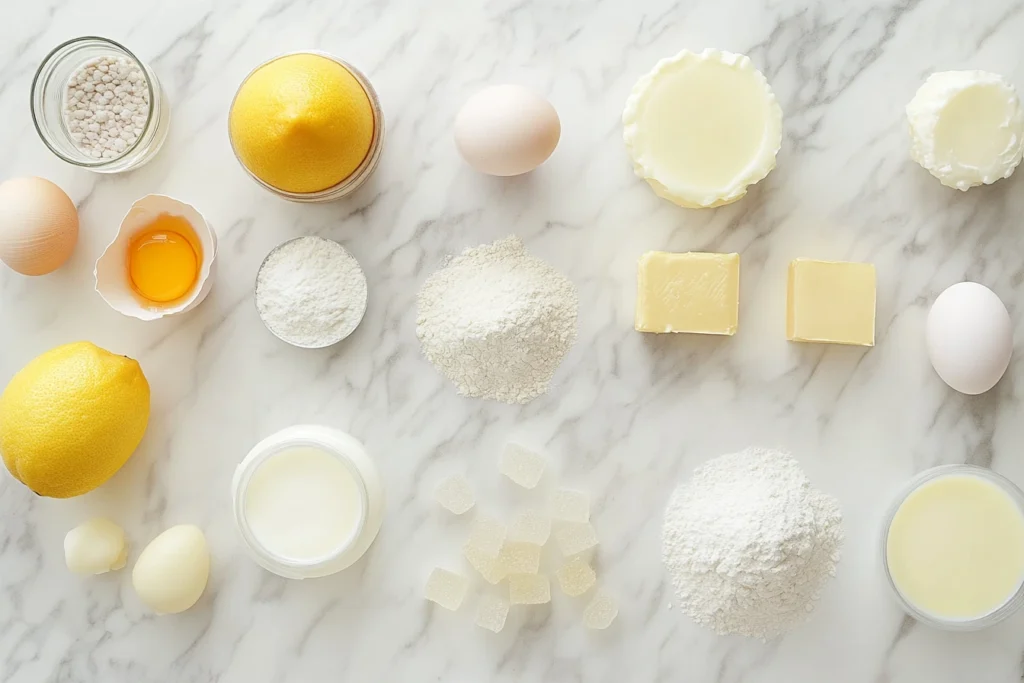
Step-by-Step Instructions for Bomboloni (Italian Donuts)
Prepare the Dough
- In the bowl of a stand mixer fitted with the dough hook, combine flour, sugar, yeast, and salt.
- In a separate bowl, whisk together eggs, vanilla extract, lemon zest (if using), and lukewarm milk.
- With the mixer on low speed, gradually pour the wet ingredients into the dry ingredients. Mix until a shaggy dough forms, about 2-3 minutes.
- Increase the speed to medium-low and add the softened butter, one piece at a time, waiting for each piece to incorporate before adding the next.
- Once all butter is incorporated, increase speed to medium and knead for 8-10 minutes until the dough is smooth, elastic, and pulls away from the sides of the bowl. The dough will be soft and slightly sticky.
- Transfer the dough to a lightly oiled bowl, cover with plastic wrap or a damp kitchen towel, and let rise in a warm place until doubled in size, about 1-1½ hours.
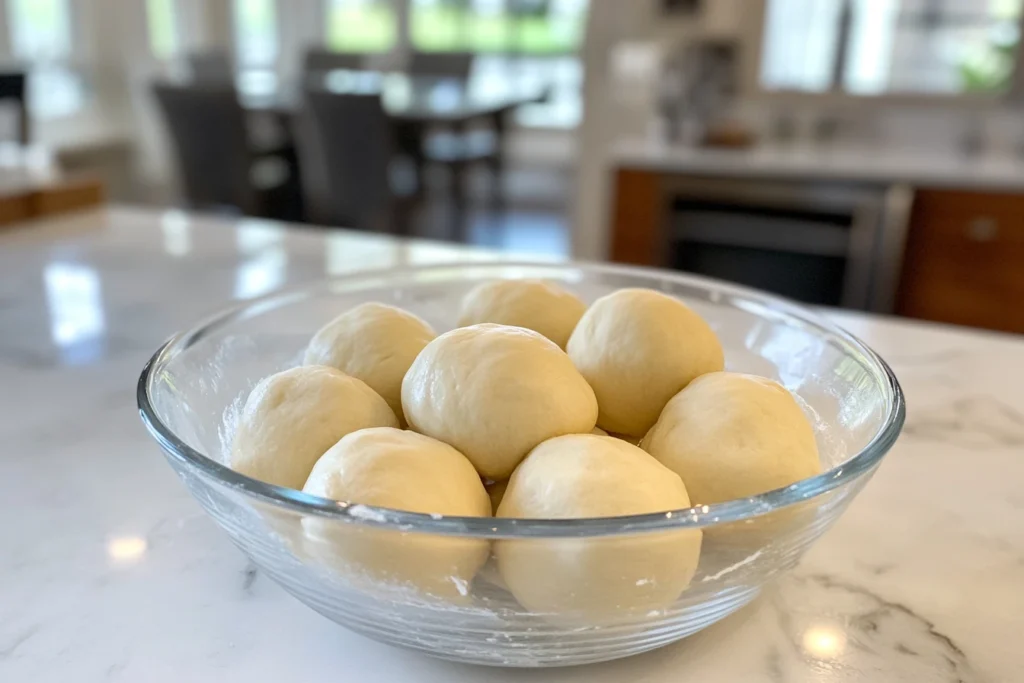
Shape the Bomboloni
- Once risen, gently punch down the dough to release air bubbles and transfer to a lightly floured surface.
- Roll the dough to approximately ½-inch thickness.
- Using a 2½-inch round cutter, cut circles from the dough. You should get about 16-18 rounds.
- Place the rounds on parchment-lined baking sheets, leaving at least 2 inches between each.
- Cover loosely with plastic wrap or kitchen towels and let rise again until puffy and nearly doubled in size, about 30-45 minutes.
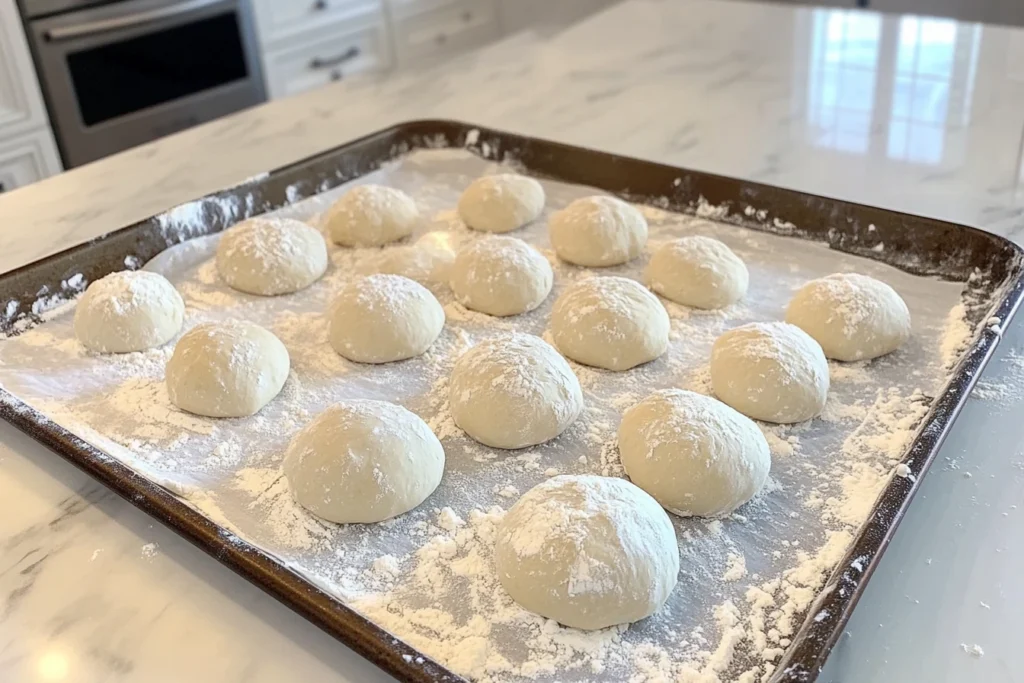
Prepare the Pastry Cream (If Using)
- While the dough is rising, prepare the pastry cream if using. In a medium saucepan, heat milk and vanilla bean (if using) until steaming but not boiling.
- In a separate bowl, whisk together egg yolks, sugar, cornstarch, and salt until pale and thick.
- Slowly pour half the hot milk into the egg mixture, whisking constantly to prevent curdling.
- Pour the egg-milk mixture back into the remaining hot milk in the saucepan.
- Cook over medium heat, whisking constantly, until the mixture thickens and comes to a gentle boil. Continue to cook for 1-2 minutes more.
- Remove from heat, discard vanilla bean pod if using, and stir in butter until melted.
- Strain through a fine-mesh sieve into a bowl, cover with plastic wrap directly on the surface (to prevent a skin from forming), and refrigerate until chilled and set, at least 2 hours.
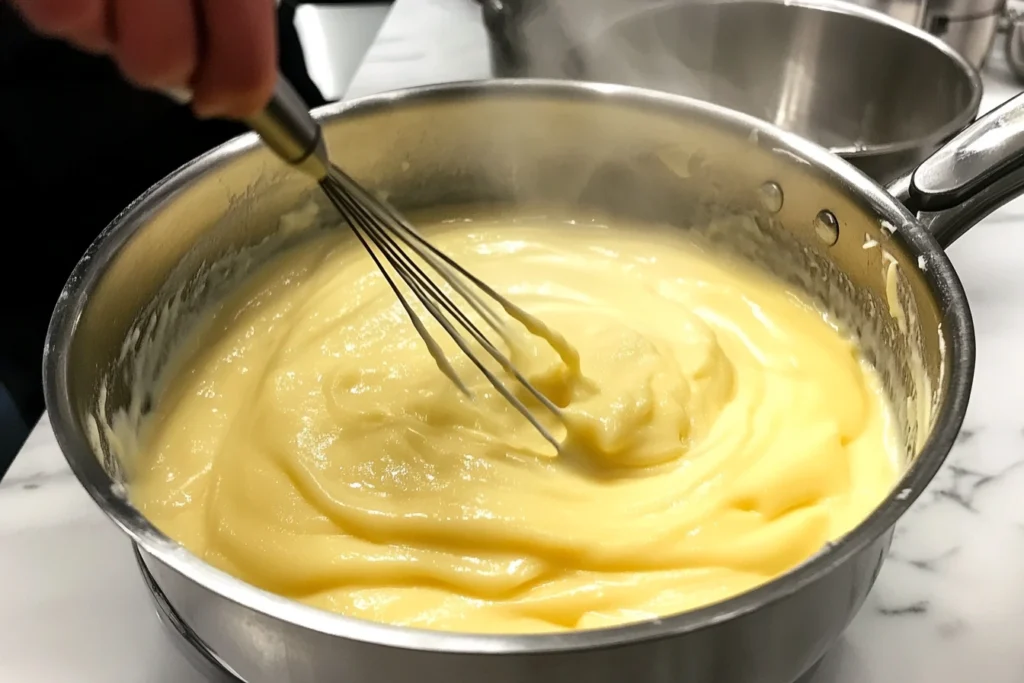
Fry the Bomboloni
- Fill a large, heavy-bottomed pot with about 2 inches of vegetable oil. Heat to 350°F (175°C), using a thermometer to monitor temperature.
- Carefully lower 3-4 dough rounds into the hot oil, being careful not to overcrowd the pot.
- Fry for about 2 minutes per side, until golden brown, using a slotted spoon or spider to flip them.
- Remove the fried bomboloni with a slotted spoon and place on paper towels to drain excess oil.
- While still warm, roll the bomboloni in sugar (mixed with cinnamon if using) to coat all sides.
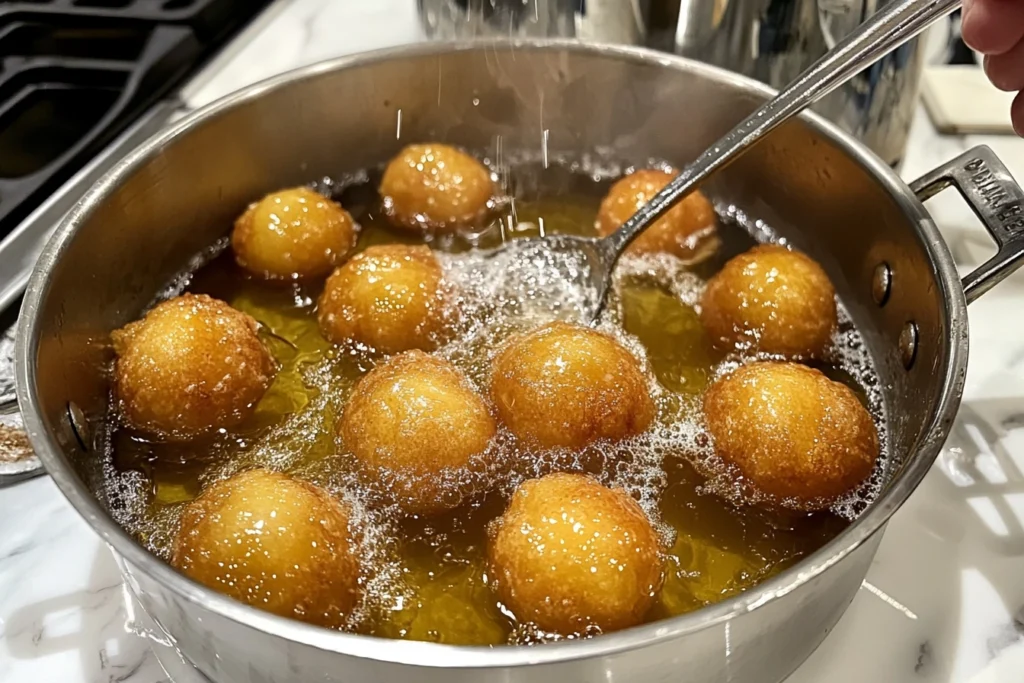
Fill the Bomboloni
- Once the bomboloni have cooled slightly but are still warm, use a small knife to make a small incision on the side of each one.
- Transfer your chosen filling to a piping bag fitted with a small round tip or filling tip.
- Insert the tip into the incision and gently squeeze to fill each bombolone. Stop when you feel resistance or see a bit of filling start to escape.
- Serve the bomboloni as soon as possible for the best experience, though they will keep for several hours.
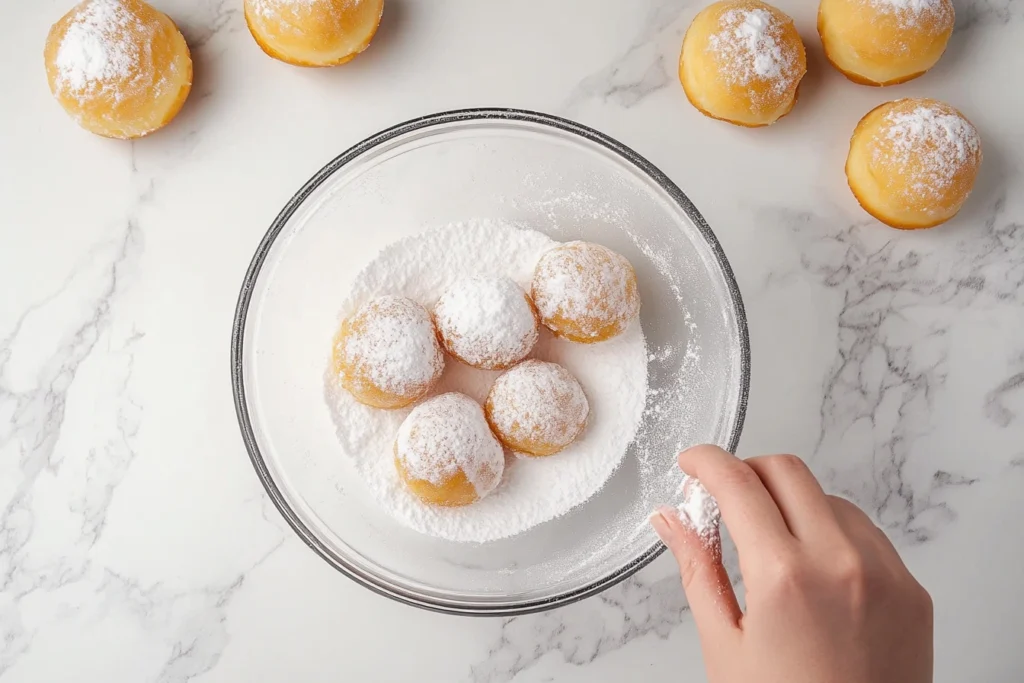
Emma’s Kitchen Notes for Perfect Bomboloni (Italian Donuts)
- The key to soft, pillowy bomboloni is handling the dough gently. Avoid overworking it once the butter is incorporated, and be careful not to deflate the risen dough too much when shaping.
- Oil temperature is crucial for proper frying. Too cold, and the bomboloni will absorb too much oil and become greasy; too hot, and they’ll brown too quickly on the outside while remaining raw inside. Use a thermometer and adjust your heat as needed to maintain 350°F.
- Make-ahead options: The dough can be prepared and refrigerated overnight after the first rise. Let it come to room temperature for about 30 minutes before rolling and cutting. The pastry cream can be made up to 3 days ahead and kept refrigerated.
- Storage instructions: Bomboloni (Italian Donuts) are best enjoyed fresh, but unfilled ones can be stored in an airtight container at room temperature for 1-2 days. Once filled, they should be consumed within a few hours or refrigerated.
Frequently Asked Questions About Bomboloni (Italian Donuts)
What’s the difference between Bomboloni and American donuts?
Bomboloni (Italian Donuts) differ from typical American donuts in several ways. They’re made with an enriched, brioche-like dough that contains eggs and butter, giving them a tender, bread-like texture rather than the cake-like consistency of many American varieties. Bomboloni are typically filled rather than having a hole in the center, and they’re usually rolled in granulated sugar rather than covered with a glaze or frosting. The result is a lighter, less sweet pastry with a more sophisticated flavor profile.
Can I bake these instead of frying them?
While traditional Bomboloni (Italian Donuts) are fried, you can bake them for a slightly healthier alternative, though the texture won’t be exactly the same. Place the shaped dough rounds on a parchment-lined baking sheet, brush with melted butter, and bake at 375°F (190°C) for about 12-15 minutes until golden brown. They won’t be quite as light and airy as fried bomboloni, but they’ll still be delicious.
My dough is too sticky to work with. What should I do?
A slightly sticky dough is actually good for Bomboloni—it means there’s proper hydration, which will result in a tender final product. If it’s truly too sticky to handle, refrigerate it for 30 minutes to firm up the butter. When rolling, use just enough flour to prevent sticking, but avoid incorporating too much additional flour, which can make the bomboloni tough.
Can I make mini Bomboloni?
Absolutely! For mini Bomboloni (Italian Donuts), use a smaller cutter (about 1½ inches) and reduce the frying time to about 1-1½ minutes per side. Mini bomboloni make adorable bite-sized treats for parties or brunches. Just be aware that they’ll be a bit more challenging to fill due to their smaller size.
How do I know when the Bomboloni are cooked through?
Properly cooked Bomboloni should be golden brown on the outside and have an internal temperature of around 190°F (88°C) if you’re using a thermometer. If you don’t have a thermometer, break open a test bombolone—the interior should be light and fluffy with no raw dough. If your bomboloni are browning too quickly on the outside but remain undercooked inside, your oil is likely too hot.
Conclusion: Why These Bomboloni (Italian Donuts) Will Transport You to Italy
There’s something truly special about biting into a freshly made Bombolone—that moment when the sugar crystals crunch, giving way to pillowy-soft dough and a luscious, creamy filling. These Bomboloni (Italian Donuts) are more than just a sweet treat—they’re a delicious taste of Italian culture and tradition.
What I love most about Bomboloni is how they bring people together. In Italy, pastries like these aren’t just food—they’re an invitation to slow down, connect, and savor the moment with loved ones and a strong espresso. Making them at home creates the same joy and connection—much like the indulgent charm of a chocolate doughnut cake.
Yes, they take a little time and patience—but the process is deeply satisfying, and the results are absolutely bakery-worthy. There’s nothing like the pride of presenting homemade pastries that rival the best Italian bakeries.
If you enjoyed this recipe for Bomboloni (Italian Donuts), you might also love:
- Pistachio Chocolate Bar – rich, nutty, and elegantly decadent
- Sweet Potato Brownies – a cozy and unexpected dessert twist
- Tiramisu Cheesecake – for those who love fusion-style Italian sweets
Have you tried making Bomboloni before? What fillings or toppings do you love most? Drop your delicious ideas in the comments below—I’d love to hear your take on these Italian favorites!
Print
Bomboloni (Italian Donuts) Recipe
- Total Time: 1 hour 10 minutes
- Yield: 16–18 bomboloni 1x
Description
These pillowy soft Italian donuts, known as Bomboloni, deliver an authentic taste of Italy with their brioche-like texture and creamy filling. Unlike American donuts, these yeasted treats are incredibly light and airy with a delicate buttery flavor, rolled in granulated sugar and traditionally filled with rich pastry cream, Nutella, or jam. While they take some time to prepare, the process is deeply satisfying and the results—golden, sugar-coated pastries with luscious filling—are absolutely worth the effort!
Ingredients
- 3½ cups (440g) all-purpose flour, plus more for dusting
- ¼ cup (50g) granulated sugar
- 2¼ teaspoons (1 packet) active dry yeast
- ½ teaspoon salt
- 3 large eggs, at room temperature
- 1 teaspoon vanilla extract
- Zest of 1 lemon (optional but traditional)
- ½ cup (120ml) whole milk, lukewarm
- 6 tablespoons (85g) unsalted butter, softened and cubed
- Vegetable oil, for frying (about 2 quarts)
- 1 cup (200g) granulated sugar, for coating
- 1 teaspoon ground cinnamon (optional, for coating)
- 2 cups (480ml) whole milk, for pastry cream
- 1 vanilla bean, split lengthwise (or 2 teaspoons vanilla extract)
- 6 large egg yolks, for pastry cream
- ⅔ cup (130g) granulated sugar, for pastry cream
- ¼ cup (30g) cornstarch
- Pinch of salt
- 2 tablespoons (28g) unsalted butter, for pastry cream
Instructions
- In the bowl of a stand mixer fitted with the dough hook, combine flour, sugar, yeast, and salt.
- In a separate bowl, whisk together eggs, vanilla extract, lemon zest (if using), and lukewarm milk.
- With the mixer on low speed, gradually pour the wet ingredients into the dry ingredients. Mix until a shaggy dough forms, about 2-3 minutes.
- Increase the speed to medium-low and add the softened butter, one piece at a time, waiting for each piece to incorporate before adding the next.
- Once all butter is incorporated, increase speed to medium and knead for 8-10 minutes until the dough is smooth, elastic, and pulls away from the sides of the bowl.
- Transfer the dough to a lightly oiled bowl, cover with plastic wrap or a damp kitchen towel, and let rise in a warm place until doubled in size, about 1-1½ hours.
- While the dough rises, prepare the pastry cream. In a medium saucepan, heat milk and vanilla bean (if using) until steaming but not boiling.
- In a separate bowl, whisk together egg yolks, sugar, cornstarch, and salt until pale and thick.
- Slowly pour half the hot milk into the egg mixture, whisking constantly to prevent curdling.
- Pour the egg-milk mixture back into the remaining hot milk in the saucepan.
- Cook over medium heat, whisking constantly, until the mixture thickens and comes to a gentle boil. Continue to cook for 1-2 minutes more.
- Remove from heat, discard vanilla bean pod if using, and stir in butter until melted.
- Strain through a fine-mesh sieve into a bowl, cover with plastic wrap directly on the surface, and refrigerate until chilled and set, at least 2 hours.
- Once the dough has doubled, gently punch it down and transfer to a lightly floured surface.
- Roll the dough to approximately ½-inch thickness and use a 2½-inch round cutter to cut circles from the dough.
- Place the rounds on parchment-lined baking sheets, leaving about 2 inches between each.
- Cover loosely with plastic wrap or kitchen towels and let rise again until puffy, about 30-45 minutes.
- Fill a large, heavy-bottomed pot with about 2 inches of vegetable oil. Heat to 350°F (175°C).
- Carefully lower 3-4 dough rounds into the hot oil, being careful not to overcrowd.
- Fry for about 2 minutes per side, until golden brown, using a slotted spoon to flip them.
- Remove the fried bomboloni and place on paper towels to drain excess oil.
- While still warm, roll in sugar (mixed with cinnamon if using) to coat all sides.
- Once slightly cooled, use a small knife to make an incision on the side of each bombolone.
- Transfer your chosen filling to a piping bag fitted with a small round tip or filling tip.
- Insert the tip into the incision and gently squeeze to fill each bombolone.
- Serve as soon as possible for the best texture and flavor.
Notes
- Room temperature ingredients are crucial for proper dough development
- The lemon zest is traditional in Italian recipes and adds a subtle brightness without making the donuts taste lemony
- For perfect texture, avoid overworking the dough once the butter is incorporated
- Maintain oil temperature at 350°F (175°C) for proper frying – too cold will make greasy donuts, too hot will brown the outside before the inside cooks
- Make ahead: prepare the dough after first rise, then refrigerate overnight; let come to room temperature before shaping
- Pastry cream can be made up to 3 days ahead and kept refrigerated
- Alternative fillings: Nutella, fruit preserves, lemon curd, or whipped mascarpone with honey all work beautifully
- For baked instead of fried: brush with melted butter and bake at 375°F (190°C) for 12-15 minutes until golden brown
- Prep Time: 45 minutes
- Cook Time: 25 minutes
- Category: Dessert, Breakfast
- Method: Fried
- Cuisine: Italian
Nutrition
- Serving Size: per bombolone with pastry cream
- Calories: 285
- Sugar: 20g
- Sodium: 90mg
- Fat: 12g
- Saturated Fat: 5g
- Unsaturated Fat: 6g
- Trans Fat: 0g
- Carbohydrates: 40g
- Fiber: 1g
- Protein: 6g
- Cholesterol: 110mg
Keywords: bomboloni, italian donuts, filled donuts, custard donuts, italian pastry, italian breakfast, homemade donuts, brioche donuts, pastry cream

